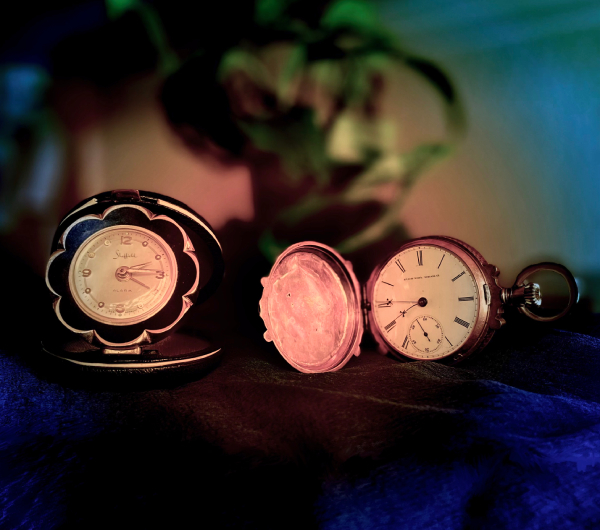“Why exactly are you doing that?”
My friend was growing impatient, and I really couldn’t blame her. We’d reached the 3rd floor of the Brooklyn Museum, which houses a substantial collection of ancient Egyptian artifacts. But we’d gotten stuck in the funerary room because I couldn’t stop staring at dead cats.
It really didn’t make sense. Frankly, Egyptian cat mummies aren’t all that special as far as artifacts go. Cats were so revered by the ancients they mummified thousands or possibly millions of their feline friends. And I’d seen mummified cats before at other museums. Of course, at the British Museum, I’d also fixated on the crumpled body of a druid preserved in a peat bog. And, while visiting the most extensive ancient Egyptian collection in the world at the Museum of Cairo, the artifact that held me most in thrall was a 2000-year-old piece of pita bread. Absurd but true.

Photo by Speckled Owl on Flickr
I wasn’t ready to interrupt my dead cat communion, but my friend was visiting from out of town, pregnant, and ready for dinner. So I did the right thing and tore myself away from the mummy’s hypnotic spell. But I thought about the cat for the rest of the evening. That was years ago, and I’ve never forgotten it.
Unveiling history’s messages
Ever since I can remember, I’ve listened to the past by interacting with its tangible, surviving relics. Although it honestly feels like some type of clairvoyance, I think it’s actually an expression of my unique brand of neurodivergence (I have ADHD, sensory issues, and mild synesthesia). Anyway, I literally feel called to buildings, objects, clothes, and everyday items. Spending time with them (ideally, touching them) provokes images and sensations that coalesce into something that feels like either a message from a ghost or a fleeting moment of time travel. Or like I’ve been told an entire story in just an instant.
The allure of the past: a seductive paradox

Photo by A.W.R.
Wacky neurodivergence aside, I’m hardly alone in my fascination for the objects that connect the actual present with the ephemeral past. Those objects are also a direct link to those who came before us. To know and communicate with our ancestors is perhaps one of the oldest human longings, a desire so powerful it’s at the heart of numerous religious practices. That same longing is also behind the reverence we have for family heirlooms.
On a less spiritual but equally powerful level, part of what makes the past so alluring is that we both can and cannot imagine it. Humans just like us created the past, yet the world they inhabited was drastically different from the one we know today. This dichotomy is both incredibly delicious and endlessly frustrating, and the desire to resolve that paradox drives our love for films and books about historical characters and our craving for time-travel tales. In the everyday world, things that survived from then until now–things we can see, touch, wear, and use in the same way as people did in the time of their origin–help us reconcile the unbreachable chasm between now and then.
But forget all that serious stuff! Old things are cool, and being around them is so much fun! Antiques, authentic vintage, and second-hand finds don’t just add a touch of history into the mix; Timeless inspiration can bring unexpected beauty, whimsy, novelty, adventure, mystery, and uniqueness to a space, an outfit, or any type of creation. Plus, the quality of most vintage and antique construction surpasses a lot of the mass-produced stuff on the market today.

Photo by A.W.R.
Refurbishing: listening to the past, creating in the present

Photo by A.W.R.
Still, there’s no reason to preserve every single antique or vintage item in the state it was found or restore every last piece with historical accuracy. Certainly, many old things deserve to be carefully preserved or lovingly restored. But giving something previously used a fresh look or repurposing cool old stuff is another way we connect the past to the present. Indeed, newer, vintage-inspired items, if well-executed, do the same thing.
Don’t get me wrong, I love authentic antiques and vintage items and have many in my home. But I also think that adding some modern flair without losing the historical flavor means the living are more likely to experience the piece in the “now,” which is how the original owners experienced it, rather than as an anachronism.
Furthermore, the act of refurbishing is a deeply creative process that inspires personal expression and ingenuity. It’s exciting to share that creative journey with other people. Which brings me to the point of this new blog, and Amaranthine’s primary mission.
Part journal, part business experiment, ultimately, Amaranthine is a labor of love devoted to exploring this evolving creative process. It’s a plunge into the decades I have lived through and the days of my parents, grandparents, and great-grandparents, as well as any other era that calls out to be heard. It’s a wild ride into my own aesthetic and imagination. It’s also a journey of learning, failing, and growing.
The past has been calling to me all my life, and now I think I’ve found the best way to answer. I’m excited to share it with you.
But please give me some space the next time I’m caught in a mind-meld with a dead cat. I promise, if the mummy has a message for you, I’ll let you know.


One thought on “Harnessing the Past, Crafting the Present”